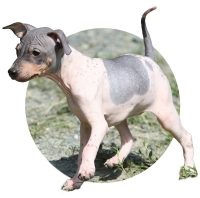I know my scalp sweats more than it did when it was covered with hair. There seems to be an inverse relation between sweating and hair growth. These are just my own personal observations regarding these complex topics of hair growth, hair loss, and how hair relates to other aspects of the skin... A sweaty scalp would also help to cool off a large brain.
Apocrine sweat glands are also in the scalp...
http://health.howstuffworks.com/wellness/men/sweating-odor/apocrine-sweat-glands.htm
View attachment 46585
I refer to this relationship in this letter I have been sending to scientists in Human evolution research below. I suggest everyone should read the Cabanac sweating study I quote. This is one of the rare real world in-vivo Human study's, about androgen related hair loss/growth.
Modern Human Hairlessness
Stephen Foote.
This short paper is intended to elaborate upon the dermal interaction described in my article below, in terms of Human evolution. In particular the debate about modern Human hairlessness, and increased sweating capacity.
https://www.academia.edu/17570665/A...nt_Hair_Research_and_an_Overlooked_Connection.
The evidence outlined in my article indicates that the hair cycle and structure of the follicle, evolved to take advantage of pressure based spatial growth controls, recognised as controlling all normal tissue growth in-vivo.
http://phys.org/news/2014-04-room-tissue-growth-cell-response.html
The link this makes with sweating capacity described in my article, strongly supports the heat stress Hypothesis of Human hairlessness as described by Wheeler.
http://www.sciencedirect.com/science/article/pii/S0047248484800792
According to this dermal interaction the changes in dermal fluid levels and pressures linked to environmental temperature changes, also change hair growth and sweating capacity. In cold conditions hair growth is increased and sweating capacity reduced, and in hot conditions hair growth is reduced and sweating capacity is increased.
The important thing here in terms of Human evolution, is that the means to create modern Human hairlessness and increased sweating capacity already existed in hairy mammals and primates, and this is heat stress related. Over the long term these heat stress response characteristics would become selected for, and a permanent dermal condition in Humans. The evolution of the fat layer in Humans could also aid in making our hairlessness permanent.
I think it is logical that the dermal fat layer we have, evolved alongside our hairlessness and not before. There would be no stimulus for this while we still had fur. I agree with Wheeler that this fat layer acts as a core temperature stabilizer, that still allows efficient dermal heat shedding when necessary. This fat layer could also restrict dermal tissue fluid drainage into deeper tissues, so encouraging the permanently higher dermal fluid pressures that maintain our hairlessness and increased sweating capacity. I think the differences in eyebrow tissue could tell the story here, as i refer to in my article.
I also agree that scalp hair was important as Sun protection in early bipedalism, as Wheeler describes. But modern Human scalp hair can grow over two feet long. Having long hair hanging over your eyes and ears is a real problem in terms of survival, unless by the time our hair got to be this long, we had also developed the sense to tie it back or cut it? I think there is a logical connection here to increasing scalp hair length through this dermal interaction, and the changes necessary for the evolution of our brain.
I also think this recent in-vivo study is important.
https://www.ncbi.nlm.nih.gov/pubmed/3203673
Whilst most including myself don’t agree with the authors conclusion about a cranial radiator, (most agree our hairless body is the radiator), the hard data here clearly confirms this dermal relationship in modern Humans. Significant changes in hair growth are linked to significant changes in sweating capacity. It is the modern Human link to androgen action in this study, that results in the testable link to gender related diseases I describe in my article.
Stephen Foote


